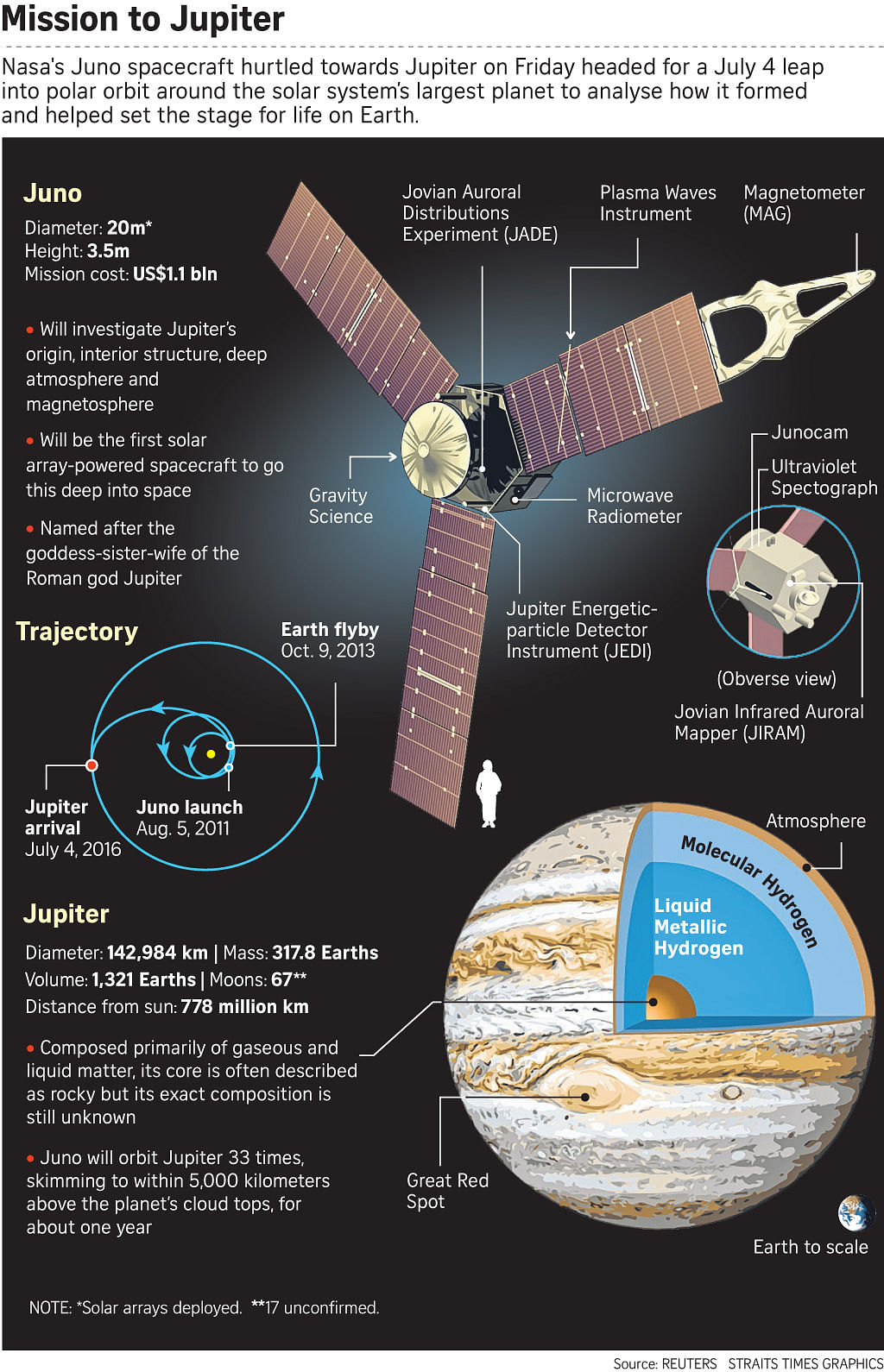MIAMI (AFP) - NASA on Monday counted down to a high-stakes attempt to orbit closer than ever to the planet Jupiter, on a US$1.1 billion (S$1.48 billion) mission to probe the origin of the solar system.
The unmanned spacecraft, Juno, is expected to arrive on late Monday in the vicinity of the largest planet in the solar system, five years after it launched from Cape Canaveral, Florida.
NASA television coverage of the event begins at 10.30pm US Eastern time (10.30am Singapore time on Tuesday).
The solar-powered spacecraft is equipped with a suite of instruments to learn about how Jupiter formed, and a radiation vault to protect the electronics from massive doses of radiation near the gas giant, reaching 1,000 times the lethal level for a human.
Jupiter is the fifth planet from the sun. Its atmosphere is made up of hydrogen and helium, and it is known for its Great Red Spot, a storm bigger than Earth that has been raging for hundreds of years.
Scientists hope to find out more about how much water Jupiter holds and the makeup of its core, in order to figure out how the planet - and others in the neighborhood including Earth - formed billions of years ago.
Since Juno is the first mission designed to see beneath Jupiter's clouds, it is named after the Roman goddess who was the wife of Jupiter, the god of the sky in ancient mythology.
She was said to be able to see through the clouds Jupiter veiled himself with to hide his mischief.
The NASA mission aims to orbit Jupiter from pole to pole, sampling the charged particles and magnetic fields for the first time and revealing more about the auroras in ultraviolet light that can be seen around the planet's polar regions.
But first, the tricky orbit maneuver must succeed, or the mission suddenly ends some 540 million miles (869 million kilometres) from Earth.
The spacecraft is currently approaching Jupiter at a speed of more than 130,000 miles per hour (209,200 kilometres per hour).
This evening, Juno will perform a series of engine burns for about a half hour to slow the spacecraft by about 1,212 miles per hour, enough for Jupiter to capture Juno into its orbit.
The orbit insertion should be complete at around 12am Eastern time on July 5 (12pm Singapore time), NASA said.
The mission aims to circle the planet 37 times before finally making a death plunge in 2018, to prevent the spacecraft from causing any damage to any of Jupiter's icy moons, which NASA hopes to explore one day for signs of life.
Juno is not the first spacecraft to orbit Jupiter but NASA says its orbit will bring it closer than its predecessor, Galileo, which launched in 1989.
That spacecraft found evidence of subsurface saltwater on Jupiter's moons Europa, Ganymede and Callisto before making a death plunge into Jupiter in 2003.
NASA says Juno will get closer than Galileo - this time within 3,100 miles (5,000 kilometres) above the cloud tops - while dodging the highest radiation regions on Jupiter "by approaching over the north, dropping to an altitude below the planet's radiation belts... and then exiting over the south."


